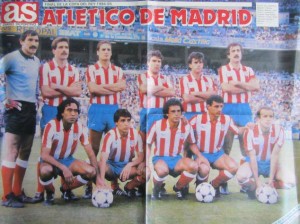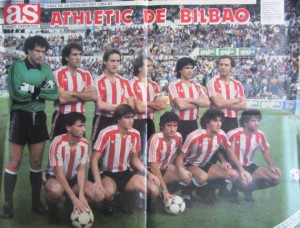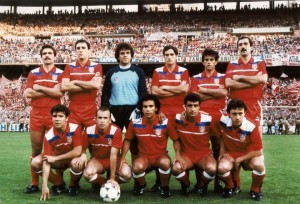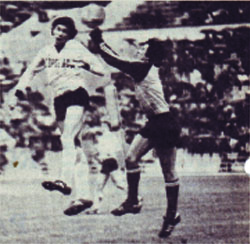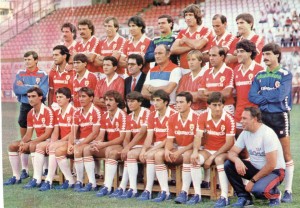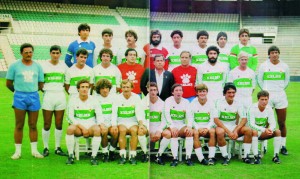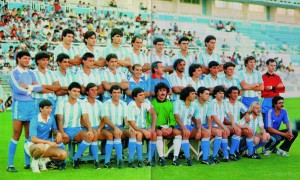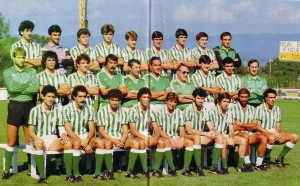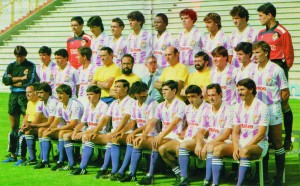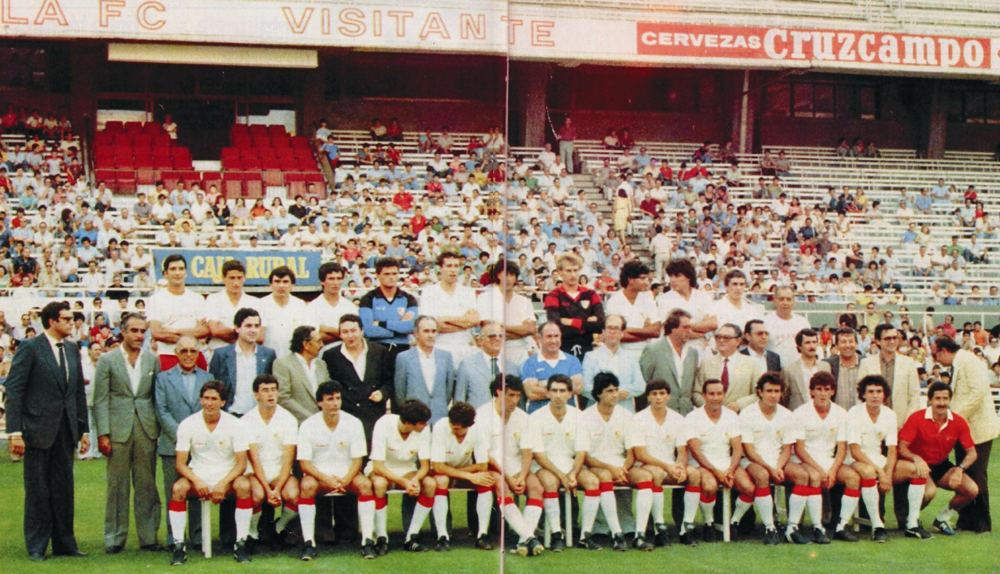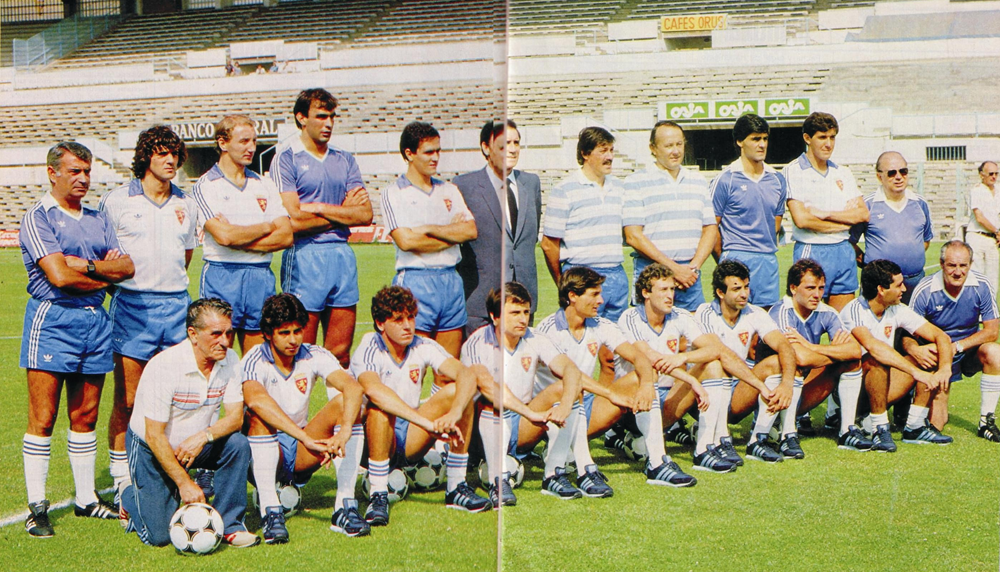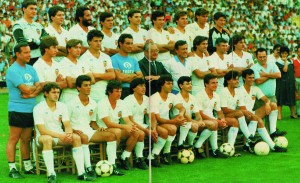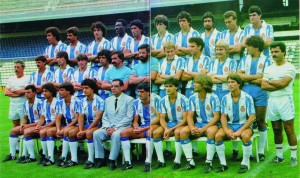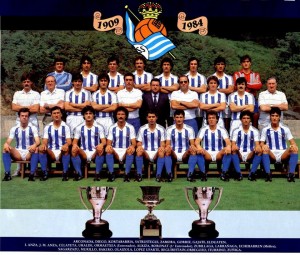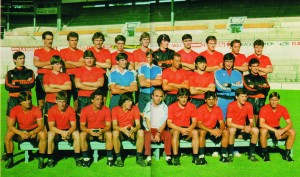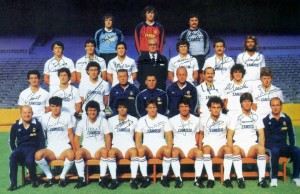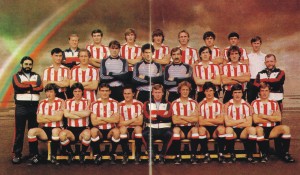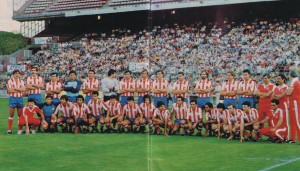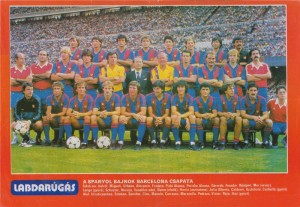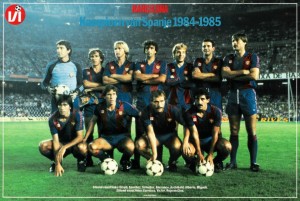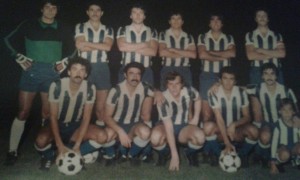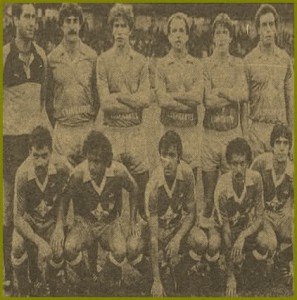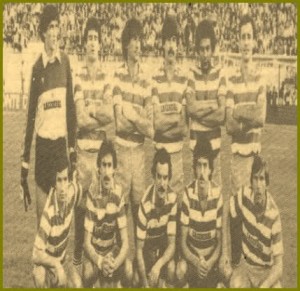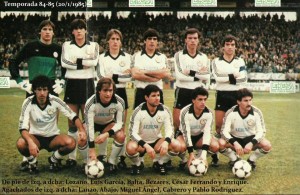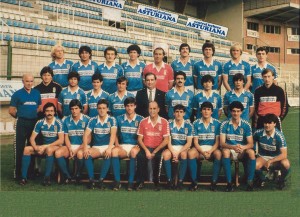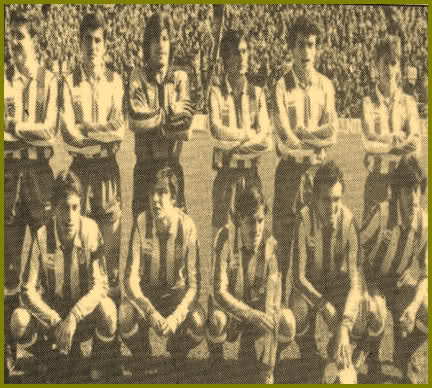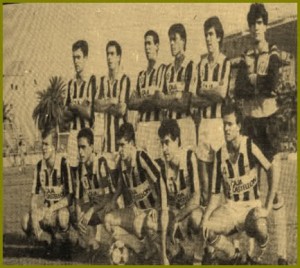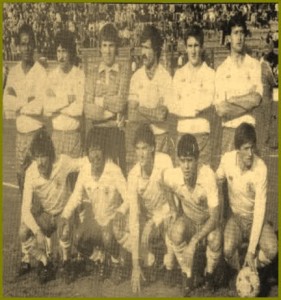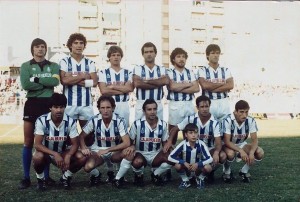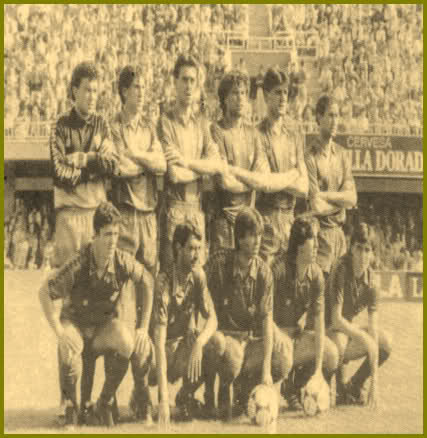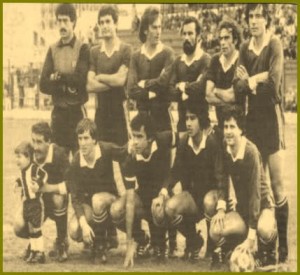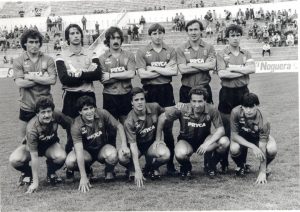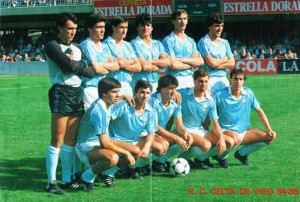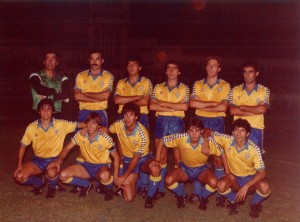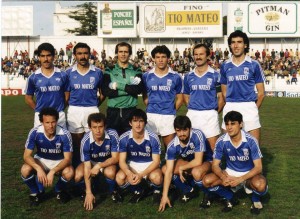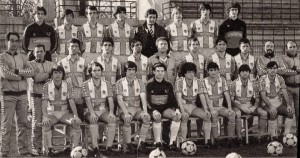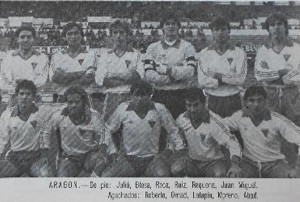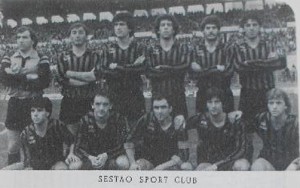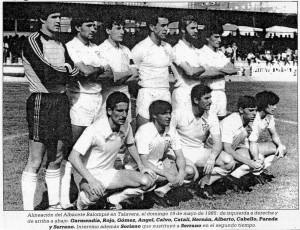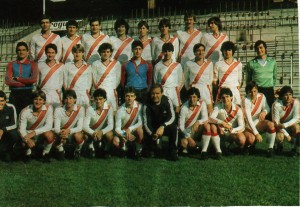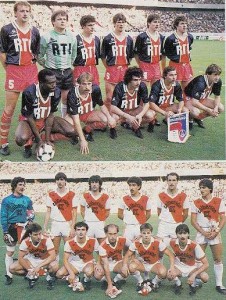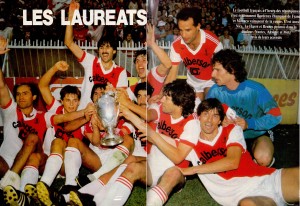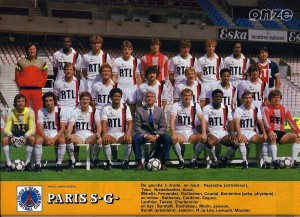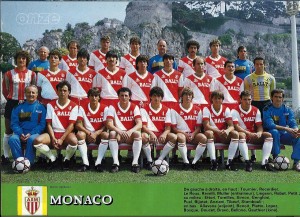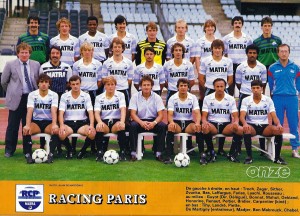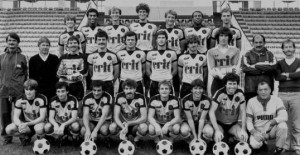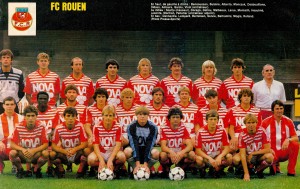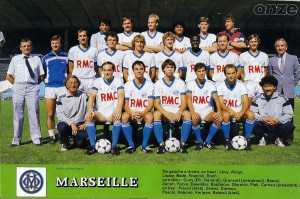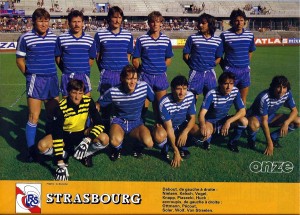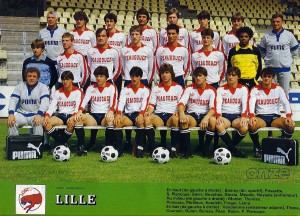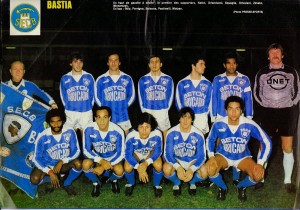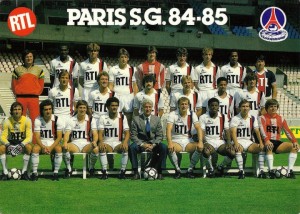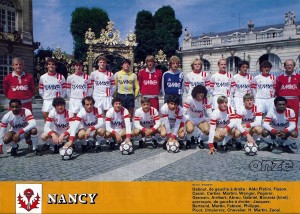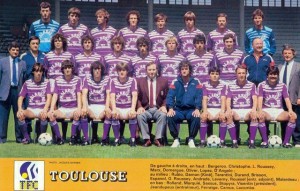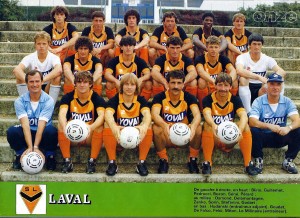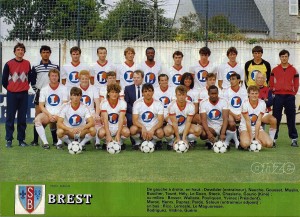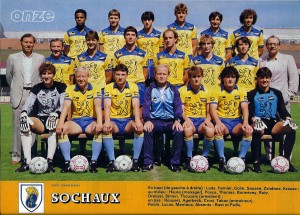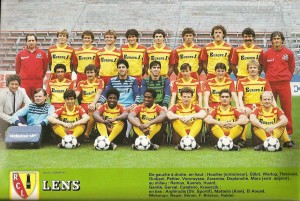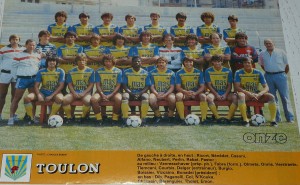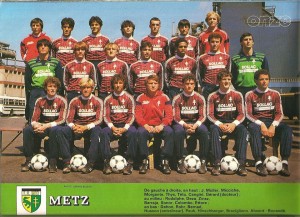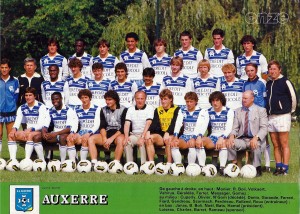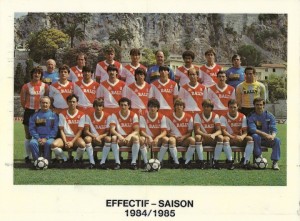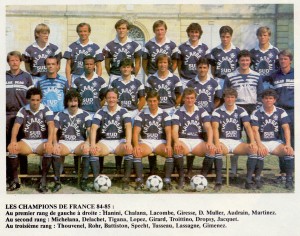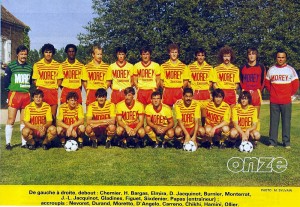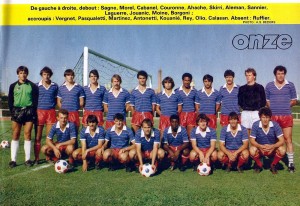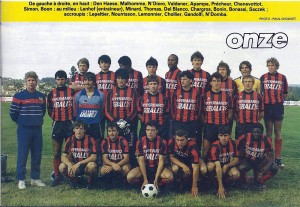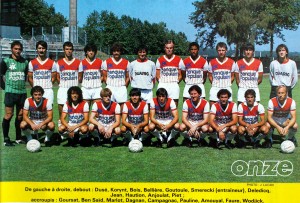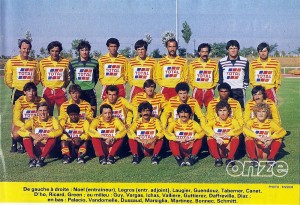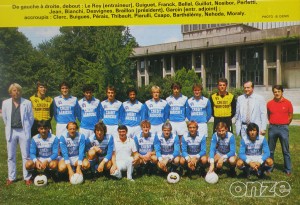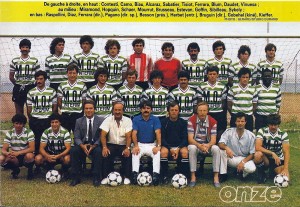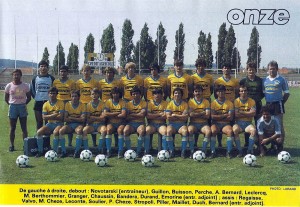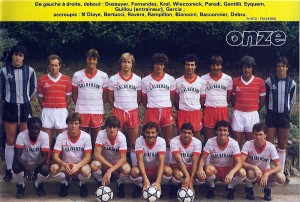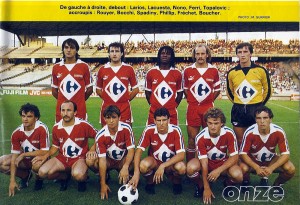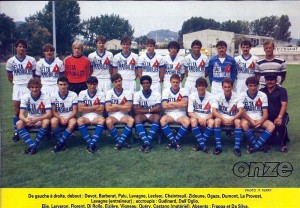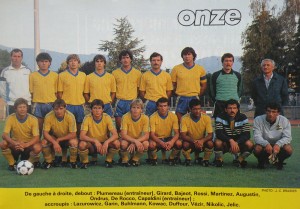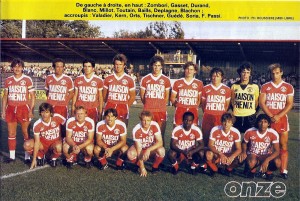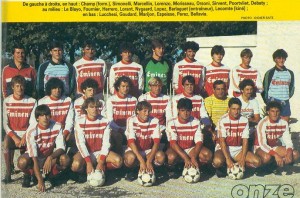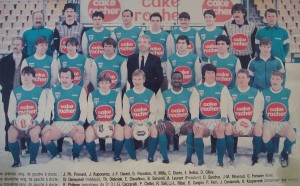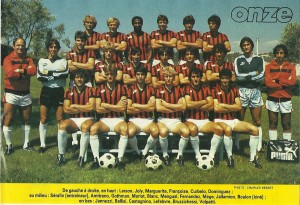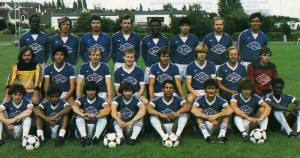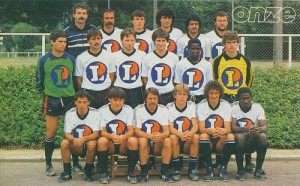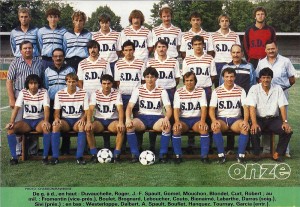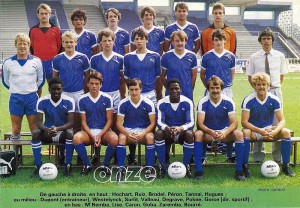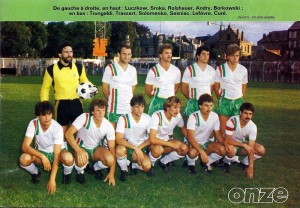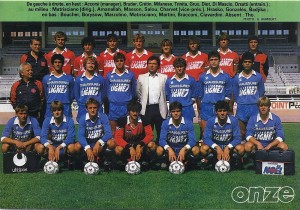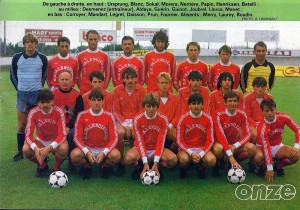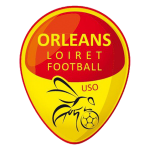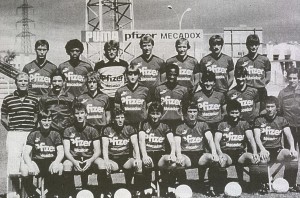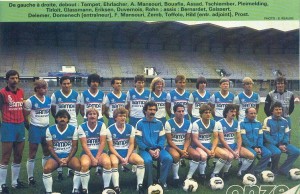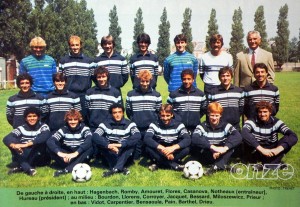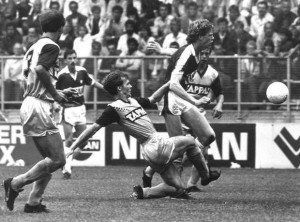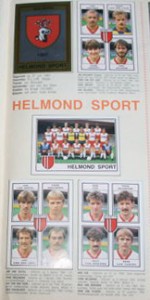First Division. The usual suspects were where they always were, high above the rest of the league, yet, there was no drama. Feyenoord was not only unable to defend its title of the previous year, but lost even the second place. Not a big surprise, really: some shortcomings were present even in the champion squad and after winning the title Cruijff retired for real and Jelyazkov went back to his native Bulgaria. Other key players were also aging and beyond their peak. In the same time there was hardly any bright young talent, except Ruud Gullit. In the same time PSV Eindhoven was not at its peak yet, still getting in shape – aging stars were still around, but on their way out, inevitably, and PSV needed a few quality additions to replace the old horses. Not ready for anything big yet. So, they clashed with Feyenoord for the second place, but were no match to Ajax. There was no drama at the bottom of the table either – two teams were settled down there early and with enough outsiders present nobody else had to worry.
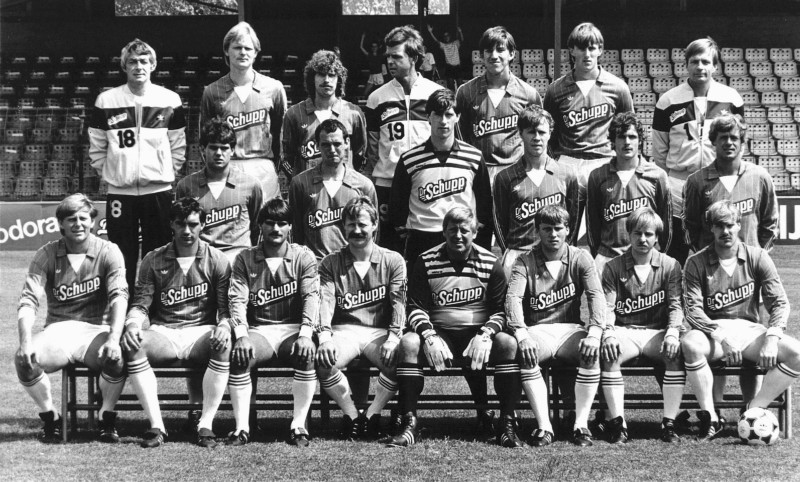
PEC Zwolle was last with 17 points and out of the league. Top row from left: verzorger A. Bunnik, Erik Nijboer, J. Muller, Ruud van Wijnen (fysiotherapeut), Willems, Veldwijk, C. Adriaanse (trainer). Middle row: Wilkens, Ijzerman, Ravens, Van Moorst, Mulder, Rep.
Sitting: Van Kooten, Wiggemansen, v.d. Hengst, Drost, Schrijvers, Booy, Weggelaar, Waslander.
Johnny Rep and Jan Mulder here, but old and far from their great days. Not enough to provide bite even if were in best shape.
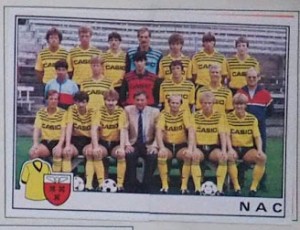
NAC Breda – 17th with 19 point. Did not have even one recognizable name, young or old, so going down was obvious.
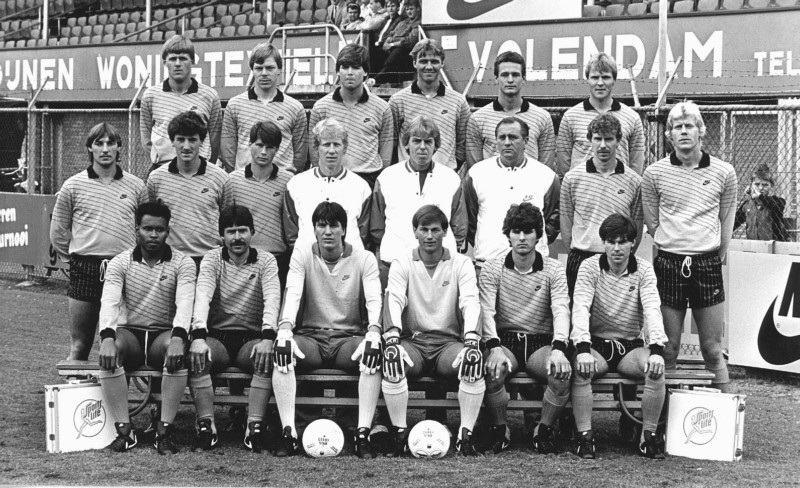
FC Volendam – 16th with 25 points. No heroics are ever expected from Volendam, but they had enough bite to stay out of trouble. Top row from left: Henny Meijer, Jaap Jonk, Jan Klouwer, Frans Hoek, Nico Zwarthoek, Klaas Tuyp.
Middle row: Rene Kraay, Jan Rooyen, Albert Plugboer, Leo Tholens, Leo Beenhakker, Bob Haarms, Dick Helling, Kees Guyt.
Sitting: Jan Molenaar, Jan Schokker, John Holshuysen, Keje Molenaar, Ton Blanken, Nico Runderkamp.
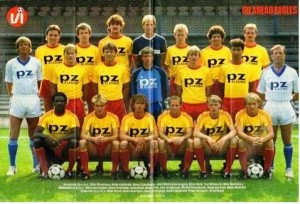
Go Ahead Eagles – 15th with 28 points.
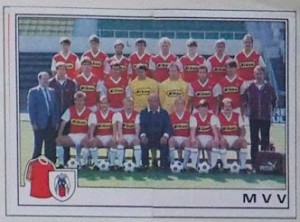
MVV Maastricht – 14th with 29 points. Nothing much, just happy to be in the top league.
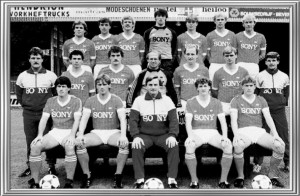
AZ’67 – 13th with 30 points. Good days were over, it seemed, and it was inevitable result of risky policy – Alkmaar climbed to the top mostly thanks to its policy of buying classy veterans and talented younger players overlooked by the big clubs. But they had to sell as well, to balance the books somewhat. And veterans did not last long. Expected drop arrived and perhaps it was time just to cherish memories of glory years.

Excelsior (Rotterdam) – 12th with 30 points. No bad, considering their lowly position in the pecking order. Just staying in the top league equaled success, so this season was rather strong and enjoyable.
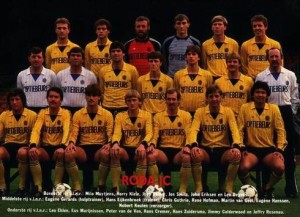
Roda JC – 11th with 32 points. Unnoticed so far and perhaps for their own good – the Kerkrade club was slowly getting better and stronger. Very slowly and no surprise, given the Dutch predicament: not a large pool of great talent and just a few clubs with real money.
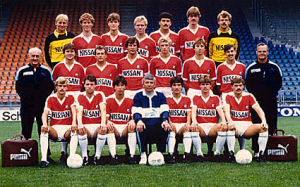
FC Utrecht – 19th with 32 points. Their usual performance on the surface – they were not much in the championship, but this was perhaps their best season ever in the same time.
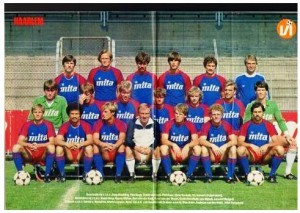
Haarlem – 9th with 33 points. Still holding its ground and not bad at all. Against the odds perhaps, but in a good way.
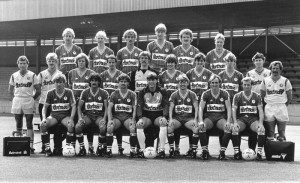
FC Twente – 8th with 34 points. Trying to reestablish themselves in the top league after terrible exile in the second division. A far cry from the great squad of the 1970s, but recovery was not going to be easy, that much was understood. Top row from left: Martin Koopman, Jan Pouls, John Scheve, Andre van Benthem, Billy Ashcroft, Bert-Jan Janssen.
Middle row: trainer Fritz Korbach, masseur Jan Steenbeeke, Jan Sorensen, Evert Bleuming, Jeroen Korpershoek, Theo ten Caat, Rene Noord, fysiotherapeut Henk Eysink.
First row: Patrick Bosch, Fred Rutten, Manuel Sanchez Torres, Theo Snelders, Michael Birkedal, Willy Barbo, Martten Vreijsen, ass. trainer Epi Drost.
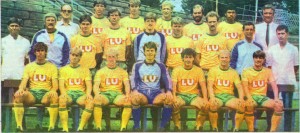
Fortuna (Sittard) – 7th with 34 points. A little known Dutch club, which was doing well at the moment and climbing up. Which perhaps explains a publication mistake: the Bulgarian magazine Start indicated that this is the squad for 1984-85 season. Sitting from left: Huud Smeets, Wilbert Suvrijn, Willy Boessen, Nico Hanssen, Rene Maessen, Gerrie Schrijenemakers, Tonnen (?).
Middle row: Wessolek (?) – masseur, Frans Korver – coach, Theo van Well, Wim Koevermans, Chris Korver, Tiny Ruys, Anne Evers, Vorn (?) – assistant coach, Bruls (?) – superintendant.
Third row: Dr. Jessen (?) – doctor, Chis Dekker, Mario Eleveld, Jaap van den Berg, Jo Bux, Arthur Hoyer, Kasten Miller (?) – manager.
Almost the same squad, but of 1983-84, not 1984-85. They had new coach this season and some minor changes in the squad.

As for 1984-85 – this is actual photo, however bad.
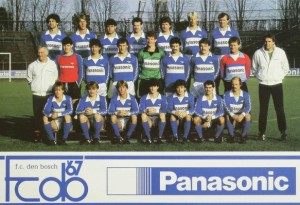
FC Den Bosch – 6th with 34 points and the best defensive record this season: they allowed 32 goals – PSV Eindhoven received 33. Not bad at all, strong season.
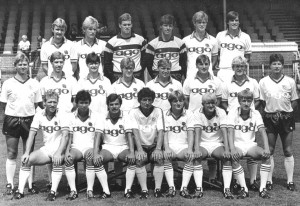
FC Groningen – 5th with 41 points. Good period for this club, even if they were not especially promising as a squad. Top row from left: Adri van Tiggelen – Jan de Jonge – Harry Schellekens – Pieter Beuzenberg – Rob McDonald – Bert Wiebing.
Middle row: Paul Zweverink (assistent) – Karel Hiddink – Walter Waalderbos – Erwin Koeman – Bud Brocken – Ron Jans – Henk de Haan – Han Berger (trainer)
Sitting: Jan van Dijk – Fandi Ahmad – Theo Keukens – John Visser (verzorger) – Jos Roossien – Anne Mulder – Ronald Steenge.
Two players will be quite famous soon, but one of them was already on his way out – Erwin Koeman would rich fame as player of Belgian KV Mechelen.
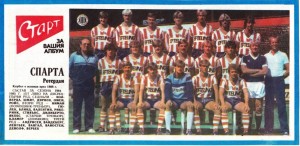 Sparta (Rotterdam) – 4th with 42 points. Enjoying strong season and excellent final position, although the title was entirely out not of reach, but of dreaming. And the same magazine made the same mistake as with Fortuna (Sittard) – this is not the squad for 84-85, as stated, but of 983-84. Sitting from left: Wout Holverda, Robin Schmidt, Henk Dirven, Rene Oomen, Ruys (?).
Sparta (Rotterdam) – 4th with 42 points. Enjoying strong season and excellent final position, although the title was entirely out not of reach, but of dreaming. And the same magazine made the same mistake as with Fortuna (Sittard) – this is not the squad for 84-85, as stated, but of 983-84. Sitting from left: Wout Holverda, Robin Schmidt, Henk Dirven, Rene Oomen, Ruys (?).
Middle row: J. Nijman – assistant coach, Adnan Gulek, Danny Blind, Valentin (?), Edwin Olde Riekerink, Ron Stevens, Silvio Diliberto, Bert Jacobs – coach, Henk Klamer – superintendant.
Top row: Arie Andriessen, Ron van de Berg, Ronald Lengkeek, Louis van Gaal, Leen van Oosten, John de Wolf, Robert Verbeek.
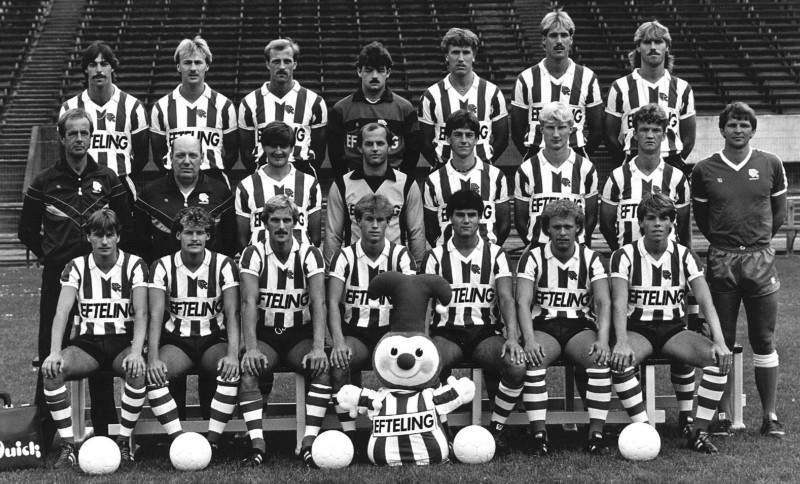
This is the squad for 1984-85. Top row from left: Robert Verbeek, Ron Stevens, Leen vd Weel, Bert Potuyt, Ronald Lengkeek, Leen van Oosten, John de Wolf.
Middle row: Henk Klamer (verzorger), J. Nijman (2e trainer), Arie Andriessen, Bas van Noortwijk, Gerrie Slagboom, Ron vd Berg, Louis van Gaal, Theo Vonk, trainer.
Sitting: Robin Schmidt, Danny Blind, Edwin Olde Riekerink, Rene Eijer, Silvio Diliberto, Rene Oomen, Bert Veldhoen.
Minor changes, really – coach gone, the Turkish player Gulek gone. Louis van Gaal was still playing, though. And intriguing pair of young defenders – Danny Blind and John de Wolf. Both will be big stars , but of arch-enemies Ajax and Feyenoord. Nice squad, begging the question ‘what if they added a few more players of quality?’ But the predicament of Sparta was to lose top players, not to get more. Unfortunately.
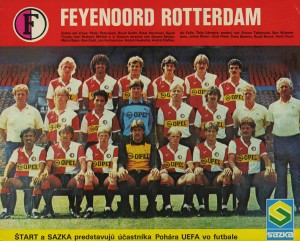
Feyenoord – above the crowd, of course, but 3rd with 48 points. Naturally, club and fans entertained hopes for another title after the success in the previous year, but it was not to be. The team lost good players and did not replace them of similar talent. Gullit was rapidly becoming world-class players, but as a whole the squad was not all that great – the defense was particularly leaky, for instance. Cannot win a title when allowing 51 goals in 34 games. Feyenoord was a bit ‘all-or-nothing’ this season – won 21 games, but lost 7, which is the total of matches Ajax and PSV Eindhoven lost together! Eventually, Feyenoord lost the second place on goal-difference.
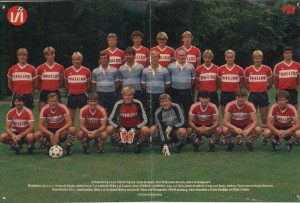
PSV Eindhoven – 2nd with 48 points and lucky perhaps, for they clinched silver thanks to better goal-difference. Their current shortcomings prevented them to compete for the title in earnest, but the team was more perspective than the one Feyenoord had. Rebuilding was smoother, Guus Hiddink was in the coaching stuff, definitive stars of the 80s were already here and looked like PSV Eindhoven would transition from one generation to another without tremors. But they were in the process of rebuilding, not ready yet for success.
 A relatively easy, but well deserved victory of Ajax. A title for Ajax is, of course, a cliché, but this one was important: Ajax was really coming back and a new great team was almost completed. Just a few finishing touches were needed, a bit more experience – for this was mainly new and young generation, a bit of s spur from inspirational coach. Details. Yes, the team was not yet at its prime, but it was almost there and credit must be given to policy of rebuilding almost always more sound and effective than the rivals, Feyenoord in particular. 24 wins, 6 ties, 4 losses, 93-46 goal-difference, 54 points. PSV and Feyenoord were 6 points behind and the rest of the league did not even count. Aad de Mos was wonderful coaching this squad, which was nice mixture of talent and experience, of domestic players and foreigners. Meeuws (Belgium), Gaselich (Austria), Molby (Denmark) from abroad, seasoned Spelbos, Schoenaker, bright and already with few seasons behind them Rijkard, van Basten, Ronald Koeman, Vanenburg, Silooy, Menzo, van’t Schip. It was also a deep squad, with good reserves eager to push forward and prove themselves. Even their assistant coach was something – Spitz Kohn was the man behind the wonderful years of Twente about 10 years back. There was strong sense that the next great team of Ajax arrived and it was again like in 1969: just a little more was needed to become truly great. Perhaps in terms of adding experience this season was crucial – like 1969 was. Not everybody was to stay, that was traditional Ajax policy anyway, but, like in the early 70-s selling a player or two was not going to dissolve the team – it had enough debt and the internal competition was already fierce. Just look for this team in the near future, that was all.
A relatively easy, but well deserved victory of Ajax. A title for Ajax is, of course, a cliché, but this one was important: Ajax was really coming back and a new great team was almost completed. Just a few finishing touches were needed, a bit more experience – for this was mainly new and young generation, a bit of s spur from inspirational coach. Details. Yes, the team was not yet at its prime, but it was almost there and credit must be given to policy of rebuilding almost always more sound and effective than the rivals, Feyenoord in particular. 24 wins, 6 ties, 4 losses, 93-46 goal-difference, 54 points. PSV and Feyenoord were 6 points behind and the rest of the league did not even count. Aad de Mos was wonderful coaching this squad, which was nice mixture of talent and experience, of domestic players and foreigners. Meeuws (Belgium), Gaselich (Austria), Molby (Denmark) from abroad, seasoned Spelbos, Schoenaker, bright and already with few seasons behind them Rijkard, van Basten, Ronald Koeman, Vanenburg, Silooy, Menzo, van’t Schip. It was also a deep squad, with good reserves eager to push forward and prove themselves. Even their assistant coach was something – Spitz Kohn was the man behind the wonderful years of Twente about 10 years back. There was strong sense that the next great team of Ajax arrived and it was again like in 1969: just a little more was needed to become truly great. Perhaps in terms of adding experience this season was crucial – like 1969 was. Not everybody was to stay, that was traditional Ajax policy anyway, but, like in the early 70-s selling a player or two was not going to dissolve the team – it had enough debt and the internal competition was already fierce. Just look for this team in the near future, that was all.
